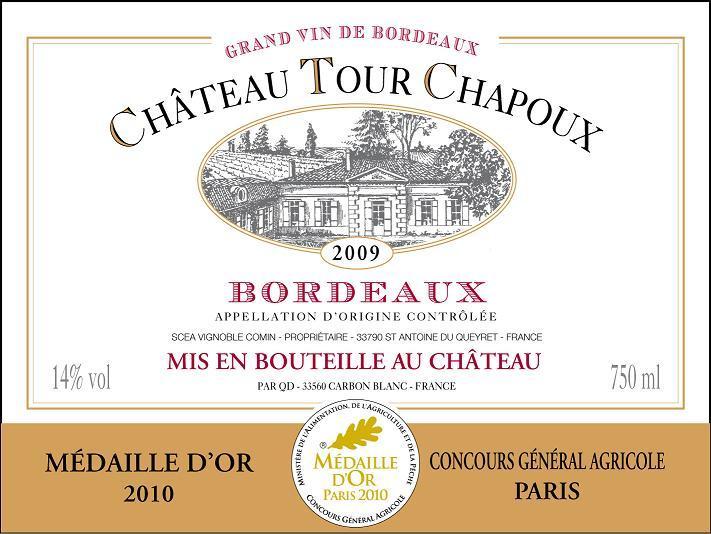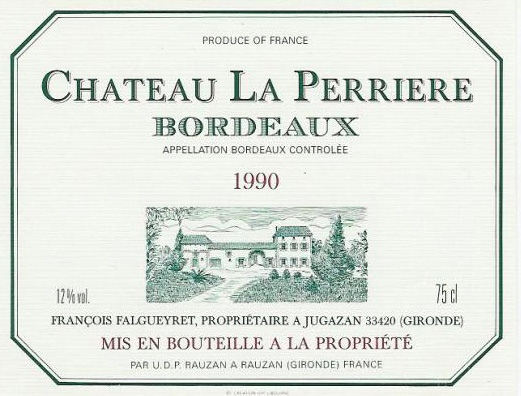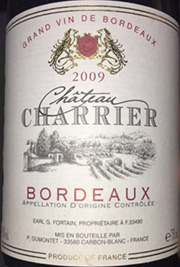France > Bordeaux
Bordeaux
Bordeaux, the vast region along the Dordogne and Garonne Rivers which conjoin at the city of Bordeaux to form the Gironde Estuary, is home to some of the world's most classic grape varieties. Best known for Cabernet Sauvignon and Merlot, the region is also home to Cabernet Franc, Malbec, Petit Verdot and Carmenere. For whites, the district produces wines from a blend of Sauvignon Blanc and Semilllon, often with a touch of Muscadelle.
Broadly, the region is divided into three primary districts: The Left Bank (Medoc and Graves) where Cabernet Sauvignon predominates, the Right Bank (Saint Emilion, Pomerol and various satellite appellations) where Merlot predominates and the primary Cab is Cabernet France, and the hilly region between the rivers Garonne and Dordogne, including Entre Deux Mers, Bordeaux Superieur and others.
Terroir's portfolio includes a range of Bordeaux wines, from basic Bordeaux Rouge to Graves and Saint Emilion, selected to represent the range of classic styles, and some of the best values in the region.
Chateau La Perriere (Bordeaux Rouge)
La Perriere is composed of 67% Merlot, 23% Cabernet Sauvignon and 10% Cabernet Franc. Soft and plummy, and took a Silver at the Paris Concours!
Chateau Charrier (Bordeaux Rouge)
Classic Bordeaux from a vineyard planted to 55% Merlot, 40% Cabernet Sauvignon and 15% Cabernet Franc. Clean and balanced, with notes of plum and mineral.
Chateau Cazenave (Saint Emilion Grand Cru)
Composed of 65% Merlot and 35% Cabernet Franc from vines averaging 40 years. Grown in gravelly siliceous soils, the wine is elegant and balanced with great ageing potential.
Chateau Benitey (Saint Emilion Grand Cru)
Composed of 70% Merlot and 30% Cabernet Franc, Benitey is a touch softer and more approachable than Cazenave with a lush finish. 40-year old vines in clay-rich soils, vinification in stainless steel followed by ageing in French oak (30% new). 2,000 cases produced annually.
Chateau La Fleur Clemence (Graves Blanc)
A blend of Sauvignon Blanc, Semillon and Sauvignon Gris, this pale gold wine shows notes of citrus and white peach. Fresh, fruity, and well balanced, with good acidity and a lingering finish.
Chateau Tour Chapoux (Bordeaux Rouge)
Tour Chapoux, a lush and fruity Bordeaux from vineyards just northeast of the city of Bordeaux in Entre Deux Mers, is produced of a blend of Cabernet Sauvignon and Merlot.
The Comin family have been making wine since 1884. The estate has a long history dating back to the thirteenth century, when The Order of the Knights of Saint John of Jerusalem set up a commandry there. Today, the mediaeval buildings have long since gone, but there is a charming eighteenth century farmhouse which the Comins have restored.
Chateau Bonfort (Montagne Saint Emilion)
A 7-acre vineyard of 5-6 miles NW of Saint Emilion, composed of sandy soil with lesser clay and silt, and planted to 70% Merlot, 30% Cabernet Sauvignon & Franc. Vinified in stainless, then aged in a mix of 50% new and 50% second-year French oak. Nice fine-grained tannins, notes of cherry and plum. 10+ year ageing potential.
Chateau Vallier (AOP Cadillac-Cote de Bordeaux)
The Cadillac region is best known for its Semillon-based sweet wines, but this small district on the southern edge of the Entre-Deux-Mers also produces classy, structure Bordeaux Rouge. Vallier is a blend of 60% Merlot, 30% Cabernet Sauvignon and 10% Malbec (yes, Malbec is one of the six classic Bordeaux varietals). Produced on shale/carbonate soils, Vallier sees 12 months en barrique before bottling. The wine is refined and balanced with notes of spice and black fruits.
“I can certainly see that you know your wine. Most of the guests who stay here wouldn’t know the difference between Bordeaux and Claret.”
Domaines Cheval Quancard: Founded in 1844 by Pierre Quancard, the business began as a bordeaux negociant. Over the years and five generations of Quancards, the firm has grown into an important owner of vineyards and chateaux, producing a range of estate-bottled wines. Pierre’s eldest son Jean, a banker, managed the firm and placed it on a sound financial footing, while Eugene, the younger son, ran the cellars and trading business. In 1869, Eugene’s son Marcel took up the torch and inherited with it his father’s passion. He became a pioneer in the science of oenology and is renowned for his unquenchable thirst for knowledge. Raoul, Marcel’s son, took over the family firm towards the end of the 1930’s, firmly driving the company among the front runners of the Bordeaux wine trade and establishing the horse as the company’s emblem in the early 1960’s.
Raoul’s sons Marcel and Christian spearheaded the acquisition of several vineyards, thereby firmly rooting the company as a vineyard owner rather than a negociant. In 1982, Roland joined his father Marcel and his uncle Christian, and i n 1985, “Fils de Marcel Quancard” became “Cheval Quancard” in honor of the firms horse logo.
In 1998 the growing company relocated its headquarters from Ambares to Carbon-Blanc, providing the company with a 175,000 sqft facility and a bottling and storage capacity enabling it to look firmly towards the future. With the same eye to the future, Roland Quancard has made the international markets one of his priorities, as well as instituting rigorous quality control measures from vineyard to bottling. Today, some 270 years after Pierre founded it, Cheval Quancard is a true Bordeaux dynasty with its stable of fine Chateaux including Chateaux Perriere, La Fleur Clemence, Charrier & Tour Chapoux, Bonfort, and the Saint Emilion Grands Crus Benitey and Cazenave.








